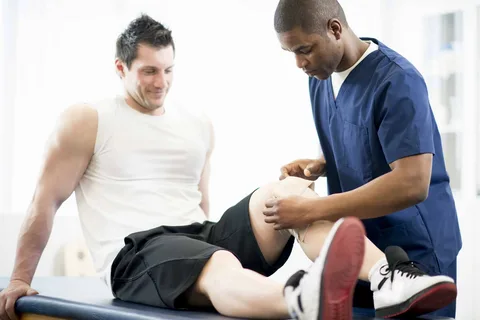Athletes in Tampa Bay face the ongoing challenge of maintaining peak performance while minimizing the risk of injury. Recovery often focuses on muscles and joints, from sprained ankles to repetitive strain injuries. Yet a lesser-known but profoundly influential component of the body plays a significant role in both injury and healing: fascia. This web of connective tissue is gaining attention among sports professionals, especially with the rise of Rolfing. This method offers a focused, therapeutic approach to rehabilitating injuries through fascia manipulation.
This article examines how Rolfing facilitates sports injury rehabilitation by targeting fascia and how it differs from traditional massage therapies. It also offers insight into why more athletes are turning to this structural integration method for long-term recovery and improved performance.
Understanding Fascia and Its Role in Injury
Fascia is a three-dimensional network of connective tissue that surrounds muscles, bones, nerves, and organs. It provides structural support, transmits mechanical tension, and facilitates movement throughout the body. When an athlete experiences injury, fascia can become restricted or adhered, leading to stiffness, discomfort, and decreased mobility. These restrictions often persist even after the apparent healing of muscle or joint damage.
Unlike muscle tissue, fascia is less responsive to traditional stretching or surface-level massage. This is where Rolfing sets itself apart. By specifically targeting the fascial layers, Rolfing can release chronic tension patterns, restore alignment, and create space for the body to function more freely.
What Sets Rolfing Apart from Traditional Massage
While traditional massage therapy typically focuses on relaxation or relief of localized muscle soreness, Rolfing approaches the body from a structural and holistic perspective. Practitioners of Rolfing assess posture, movement, and alignment before applying slow, deliberate pressure to release fascial restrictions.
Rolfing sessions are typically more interactive than massage therapy. Clients may be asked to move or breathe in specific ways as the practitioner works on different parts of the body. The aim is not just to relieve tension but to reorganize the body’s structure in a way that promotes optimal balance and movement efficiency.
This structural approach is beneficial for athletes recovering from injury. Rather than treating symptoms in isolation, Rolfing considers how an injury might alter movement patterns and create compensations throughout the body. For instance, a knee injury may cause subtle shifts in hip alignment or gait, which can lead to further strain elsewhere. By addressing these, Rolfing, which focuses on patterns in the fascial system, supports not only healing but also the prevention of future injuries.
The Benefits for Injured Athletes
Athletes recovering from injury often report that Rolfing provides a more profound and longer-lasting form of relief than other bodywork modalities. Because fascia responds well to sustained pressure and intentional manipulation, the results can be transformative. Key benefits include:
- Improved range of motion and flexibility
- Decreased chronic pain and muscle tightness
- Realignment of posture and structural balance
- Enhanced awareness of movement habits
- Reduced likelihood of re-injury through corrected mechanics
For those who have plateaued in physical therapy or find that traditional massage offers only temporary relief, Rolfing may offer a more effective path forward.
A Complementary Tool in Recovery Programs
Rolfing is not a replacement for conventional medicine; rather, it serves as a complementary tool that integrates well with physical therapy, chiropractic care, and strength training programs. Many athletes understand that combining Rolfing with their rehabilitation plan accelerates recovery and improves overall performance.
Because Rolfing works progressively through the body, it is often structured as a series of sessions, each addressing different fascial lines and patterns. This series-based approach enables practitioners to methodically restore balance and mobility throughout the entire system, rather than treating symptoms in isolation.
Moving Forward After Injury
Injury recovery can be frustrating, especially when progress feels slow or incomplete. For athletes seeking a more comprehensive, fascia-focused approach to healing, Rolfing offers a unique and effective method. Its emphasis on structural integration, alignment, and long-term function makes it a compelling choice for those serious about their athletic longevity.
For those in Tampa Bay exploring advanced recovery techniques, Williams Rolfing provides individualized sessions tailored to the needs of each client. Whether you are an elite athlete or For someone simply trying to regain full mobility, Rolfing offers a path toward lasting recovery and improved movement.

